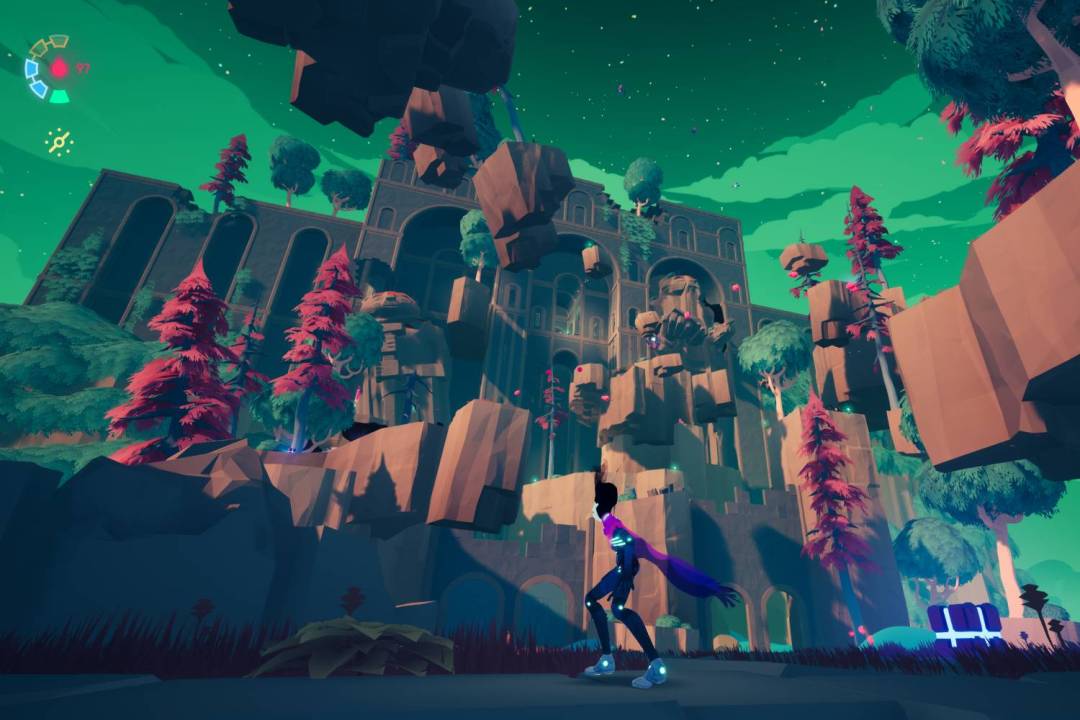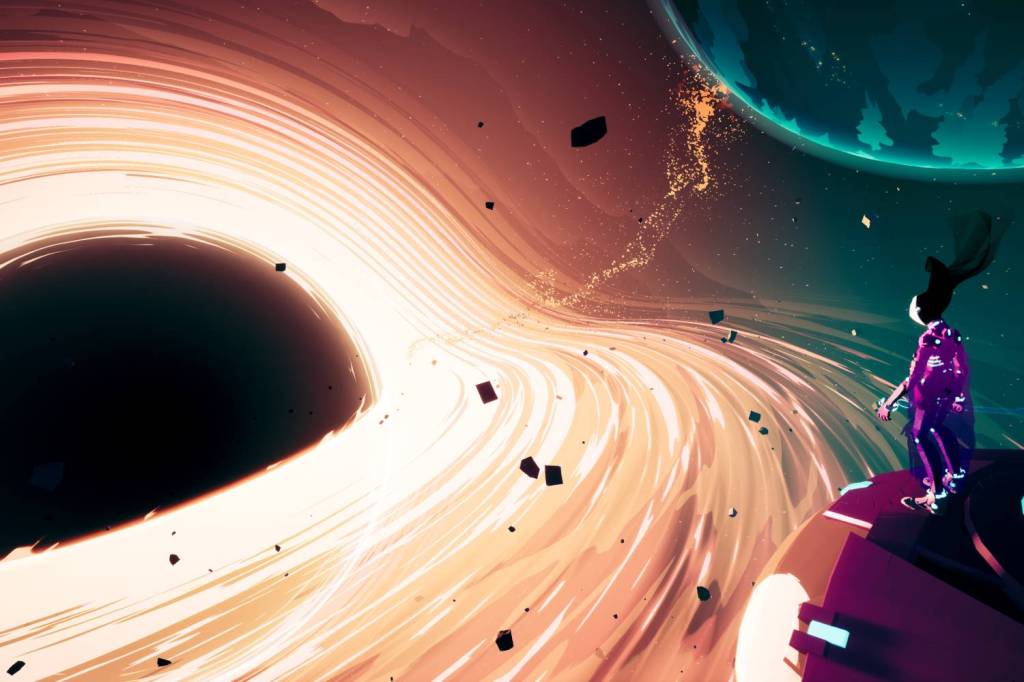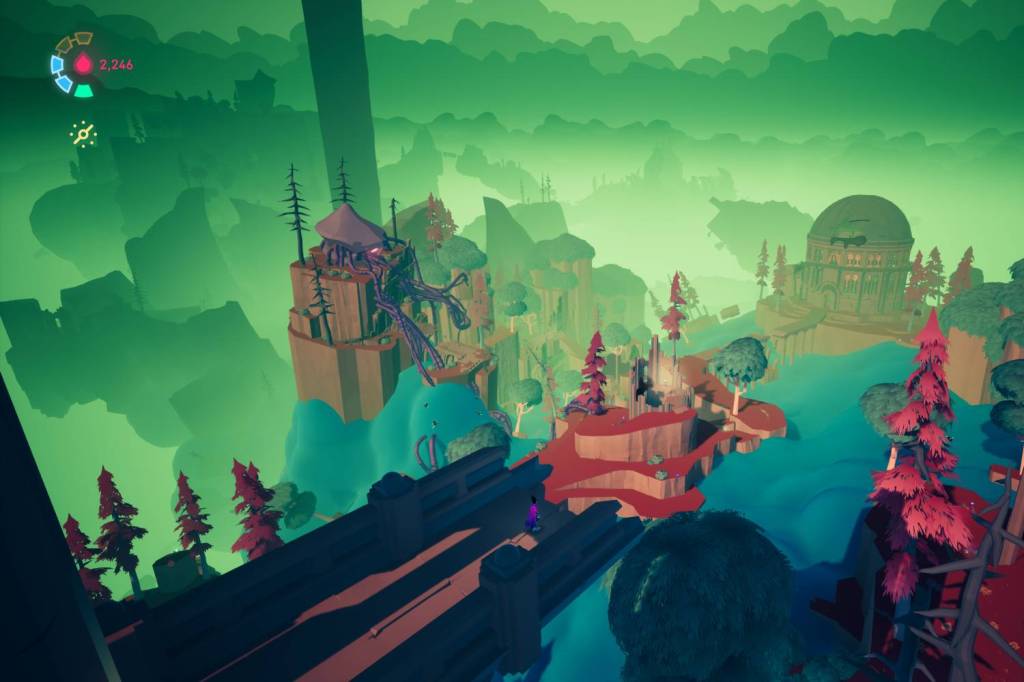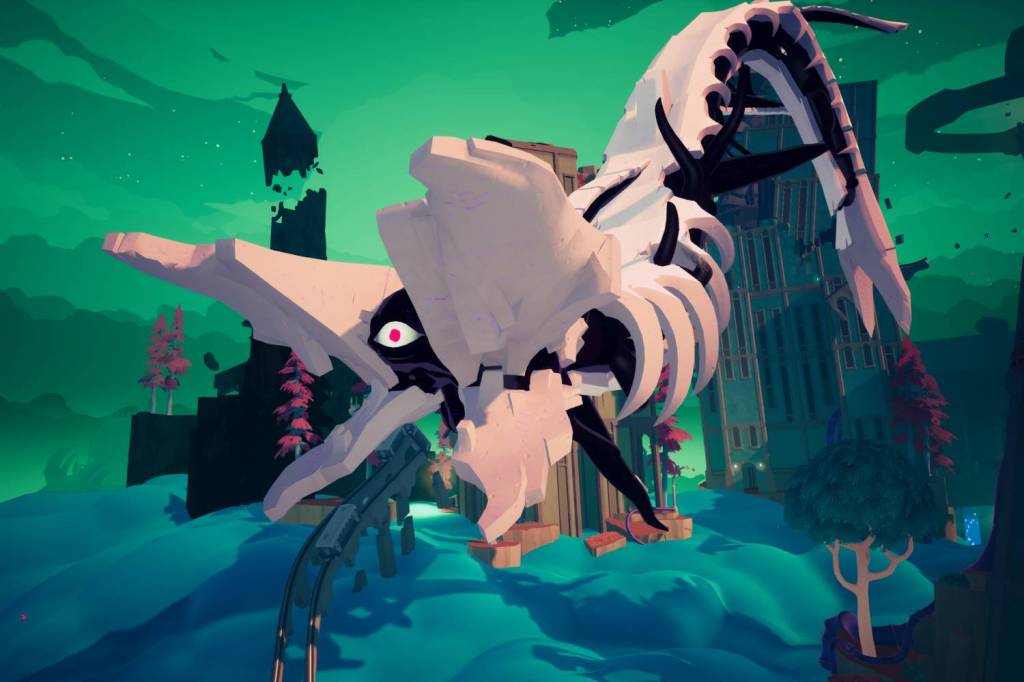Solar Ash review

Save the world on your skates
What would happen if you combined Mario and Sonic? No, we’re not talking about the Olympics tie-ins, but more something like Solar Ash.
It sounds like a leap of logic but it’s also a leap in ambition for indie developer Heart Machine who made its debut with 2016’s critically acclaimed Hyper Light Drifter, a terrific post-apocalyptic pixel-art hack-and-slasher reminiscent of 2D top down Zelda games. But apart from the neon-soaked visuals and another doom-laden setting, Solar Ash is a world apart from its predecessor. Instead, it’s a beautiful kinetic 3D platformer that borrows from two of the most iconic mascot platformers, and indeed feels like an actually good 3D Sonic game that’s eluded us for decades.
On the other hand, its apocalyptic narrative, which tasks with taking down enormous enemies, also brings to mind PlayStation masterpiece Shadow of the Colossus. On this comparison, it may not fare as well, but combining these influences, you’ve still got an excellent recipe for a game that feels distinct and fun to control.
Nice and breezy

While there’s quite a serious story as you play as a Voidrunner called Rei – seemingly the last of her kind – trying to save her world from being destroyed by a black hole by embarking on a suicide mission inside it, it’s the fundamental gameplay of Solar Ash that immediately grabs you.
It’s not quite open world, but there are distinct expansive spaces, not dumped with the bloat of collectibles and fetch quests. Instead, the real estate allows you to appreciate the speed of this game, where you’re almost constantly holding back L2 (you can also change it to a toggle) or getting an extra boost with the tap of R1 so that Rei skates effortlessly across surfaces or just as often grinds on rails at breakneck speed. While it also brings to mind Sega cult classic Jet Set Radio, the grinding and platforming feels most like the blue hedgehog’s stages from Sonic Adventure 2 (i.e. the last time 3D Sonic was any good).
Where Solar Ash succeeds from Sega’s mascot is that it’s largely devoid of the frustrations that come with such agility. It’s not always perfect – the platforming is at its best when it keeps up the momentum out in the open areas rather than cramped interiors – but some of the exactness required is alleviated by being able to enter a timeslip, which slows down the action giving you time to reposition the camera to grapple onto distant points or enemies. The verticality of levels are also designed with generous checkpoints while you’ll usually open up a shortcut that saves you the hassle of finding your way back up should you slip up.
Jet Set Colossus

Although you could say there’s combat in Solar Ash, as Rei whips out an energy blade to hack-and-slash biomechanical enemies known as Anomalies, it rarely feels like combat. Instead, traversal is kept as the game’s very singular core, even as it occasionally changes things up with different puzzles and environmental hazards. Its headline setpieces are the Massive Anomalies taking various beastly forms that feel like platforming levels themselves.
To take on these latter Anomalies however, you must first stir them from their slumber by cleansing a number of corrupted nodes on the map in what amounts to mini-races around the environment as you slash at spiky checkpoints before reaching the end to stab at the final exposed nerve, which you might liken to some kind of large-scale acupuncture. A gauge at the bottom alerts you to the sometimes tight time limit you have to reach the next point before it resets, while a climbable oily black substance that usually surrounds these areas also turns to lava, taking a bite of your shield points if you make contact.
The same mechanic applies to taking down the Massive Anomalies then, which unlike the Colossi of Shadow of the Colossus isn’t about figuring out a weak point, because you’re just essentially doing the same thing over and over again. It would be one-note if it didn’t feel so great in its sense of flow as you master the demands of traversing these mini race courses. It sure makes for more exhilarating encounters than the rote three-hit boss fights of a 3D Mario game.
Narrative eclipse

Keeping with its fast breezy pace, Solar Ash is a fairly short game at about six hours, which feels wise so as to not outstay its welcome. But unlike Sonic, it’s not as replayable, with some rather underwhelming optional collectibles and lore, though we suspect given its tight platforming mechanics, it’s likely to attract speedrunners looking to break the game with eye-watering completion times.
There’s nothing wrong with a game that’s good to play just once, but once you stop to take it in, its story doesn’t linger and despite its heavy themes on grief and pain while reckoning with pending doom, it lacks the emotional resonance of its influences like Shadow of the Colossus. Partly it’s down to the execution, such as how its sense of otherworldliness is undercut by voiced dialogue that sounds just too contemporary American (one character whose logs you find throughout the game is especially grating) when no talking would’ve been preferable or perhaps a fictional language. In contrast to the enigmas open to interpretation in Shadow of the Colossus or even Heart Machine’s own Hyper Light Drifter, which had its own glyph language you needed to learn to decipher, Solar Ash ends up overexplaining itself and also touches on some overly familiar plot points that don’t land as well, with one twist feeling a bit done to death of late.
Instead, Solar Ash is more memorable for the breathtaking vistas it conjures, like the way the camera occasionally pulls back to provide a real epic sense of scale showing your own vulnerable insignificance or in the moments when you’re grinding up to the heavens. These haunting pockets of silent cinematic poetry linger longer in the mind than the game’s heavy-handed script. And of course, the traversal ultimately goes a very long way.
Solar Ash verdict

Solar Ash’s breathtaking scale doesn’t quite match up to Shadow of the Colossus or indeed the developer’s terrific debut, a bit too familiar while not quite having the emotional resonance it aims for. But when it all flows, its core 3D platforming is fast, fun and effortless to play and quite easily the best 3D Sonic game we’d really like to see in the future.
Stuff Says…
A fantastic feeling 3D platformer which while brief isn’t short on scale or brilliant traversal.
Good Stuff
Terrific flowing platforming
An epic sense of scale and distinct areas
Fun boss fights
Bad Stuff
Weak story
Occasional camera issues
Not much incentive for replaying



